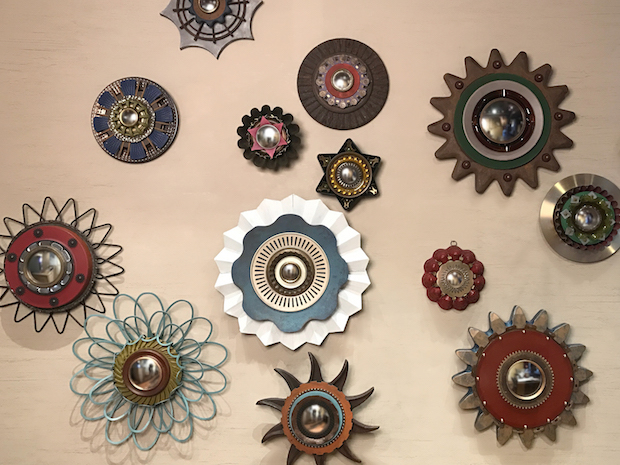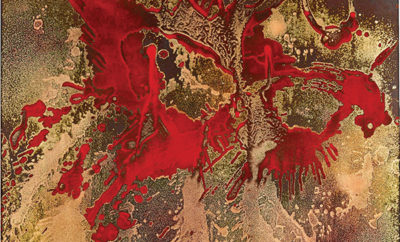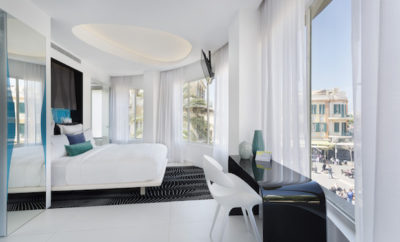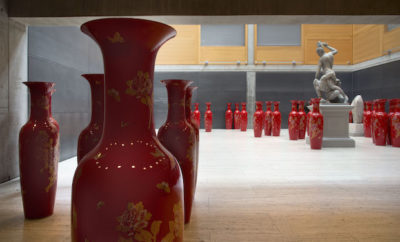 COURTESY FORTUNY
COURTESY FORTUNY
Design
Cristobal Morales Reinvents the Wheel
MARK MCDONALD IS THE LEGENDARY vintage furniture dealer whose Manhattan store, Fifty/50, is widely credited with snatching mid-century modern from the brink of oblivion in the chintz-obsessed 1980s and thrusting it onto center stage, where it remains to this day. Like a lot of other dealers, McDonald left New York City in the early 2000s and moved his business north to Hudson.
“I go to a gym in Chatham,” a small town near Hudson, McDonald recently told me. “And I sometimes stop in a little restaurant, The Taste Box, on the Main Street there to get a burrito. One day last summer, I asked the guy behind the counter, ‘Who makes these?’ indicating, not the burrito, but a spellbinding assortment of elaborately framed convex mirrors mounted on the walls. ‘I do,’ he replied. ‘My name is Cristobal Morales.’”
Perhaps not since the teenaged Lana Turner was discovered sipping soda in a Hollywood malt shop have the planets aligned so tidily. As luck would have it, McDonald at that time was searching for material to feature in his booth at the upcoming 2016 Salon Art + Design show in Manhattan. His display of Morales’s mirrors there caused a stir, capturing the attention of, among others, Wendy Dreer, United States sales director for Fortuny, who says the mirrors are doing “very well” in Fortuny’s to-the-trade showroom in the Design & Decoration building at 979 Third Avenue.
In truth, Morales is no stranger to “the D&D,” as it is known in design circles in New York and beyond. Decades earlier, when he was twenty-four, he’d talked his way into a job in the office of interior designer A. Michael Krieger, who then headed a thriving eponymous firm in New York. That lucky break came nearly a decade after the very same enterprising chico left his hardscrabble Mexican pueblo—a town so poor there was just one telephone—to slip across the border at Tijuana. He and Krieger, now living just outside Chatham, wed three years ago, finally permitting Morales to travel outside the country. “I hadn’t seen my mother in twenty-five years,” he says.
Difficult as it was living under the radar—no driver’s license, no social security card—it gave Morales the time and solitude to cultivate his prodigious creativity. Along with becoming an exceptional cook, he made things, often out of found objects, just as he’d made his own playthings as a child. Then, several years ago, he came across a coffee table book, with text in French, featuring the work of Line Vautrin (1913–1997), the French decorative artist whose costume jewelry and inventively framed convex mirrors earned her the sobriquet “poetess in metal.” Morales was transfixed. So Krieger gave him a box of convex mirrors. After months of collecting detritus—a wheel from an old tiller, rusted gears, discarded industrial brushes—Morales began framing each mirror by combining two or three of these unlikely objects. The results were striking, eventually winning him two sold-out local shows.
By the time McDonald discovered the work, Morales’s assemblages had literally grown. Now more colorful and complex (some seven or eight layers deep), one might feature a funky colored glass candy dish juxtaposed with a collapsible vegetable steamer, both elements rendered improbably glamorous by Morales’s magic touch. McDonald’s characterization: “Line Vautrin meets Top Chef.”

Courtesy Fortuny












